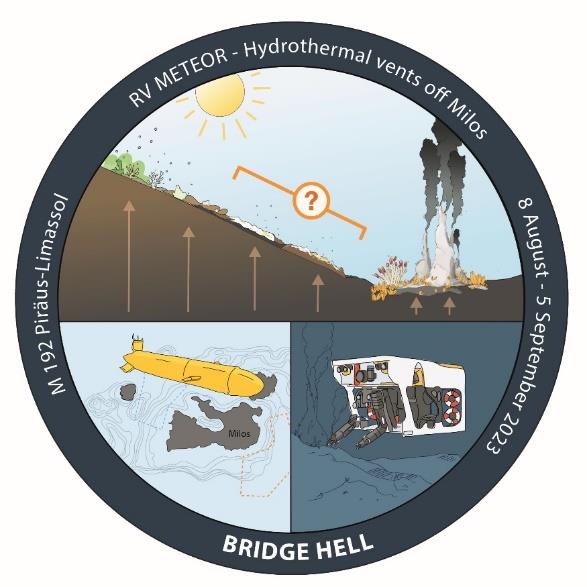Expedition investigates hydrothermal systems in different water depths for the first time
How such hydrothermal systems function in shallow water is the focus of a MARUM expedition that will start in Piraeus (Greece) in August and whose destination is the Mediterranean island of Milos. During the expedition M192 with the research vessel METEOR, the researchers on board will search the area around Milos for hydrothermal systems and subsequently sample their geology, geochemistry, and (micro)biology, both in the shallow, coastal light-flooded zone and in deep, offshore dark waters.
Dr. Solveig Bühring from MARUM – Center for Marine Environmental Sciences at the University of Bremen is leading the cruise, following up on work in her DFG-funded Emmy Noether group "Hydrothermal Geomicrobiology". "Until now, shallow water and deep-sea hydrothermal systems have been treated as independent, seemingly unrelated entities; this expedition is a first attempt to remove this arbitrary boundary and study hydrothermal systems as a continuum," says Solveig Bühring.
The expedition begins on August 8 and is divided into two legs. On the first part of the expedition, the team will map hydrothermal vents on board using the multibeam echo sounder on board and the autonomous diving robot MARUM-SEAL 5000. On the second part of the cruise, the researchers will sample hydrothermal vents at different water depths. For this purpose, they will use the diving robot MARUM-SQUID.
The researchers report about the expedition in a logbook (in German).
More information:
Participating institutions:
- MARUM Center for Marine Environmental Sciences, University of Bremen
- Constructor University Bremen
- Institute for Chemistry and Biology of the Marine Environment (ICBM)
- GeoZentrum Nordbayern
- National & Kapodistrian University of Athens (Greece)
- Hellenic Centre for Marine Research (Greece)
- Max Planck Institute for Marine Microbiology Bremen
- GEOMAR Helmholtz Centre for Ocean Research
Contact:
Dr. Solveig Bühring
MARUM – Center for Marine Environmental Sciences, University of Bremen
Petrology of the ocean crust
Email: [Bitte aktivieren Sie Javascript]




